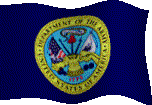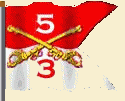Charlie Horse History Forward
Personal Recollections of CPT Tom Ford:
The departure of the 1/5th was something of a ‘line in the sand’ for the Troop. When asked, “Who assigned your Missions?” I had to think for a minute and then answer, “I don’t know for sure.” In the afternoon or evening, the phone would ring in Operations with our assignments for tomorrow. We’d fly them and submit SITREPs to I don’t know who. Clearly it must have been one of the Brigades from the 101st or possibly XXIV Corps. When we needed higher level aircraft maintenance or to get replacement aircraft, it was still the 142 TC CO based at Phu Bai. Our administrative support, which was never all that impressive after the Troop moved up north, reached ‘a new low.’ For example, I’d DEROS in late Oct and eventually left the Army with one Air Medal. I wasn’t the only pilot to receive this treatment.
Personal Recollections of CPT Joe Hogg:
I was a Cobra pilot with the 2/20 ARA 1st Cav in 69-70. I joined Charlie Horse in Apr 1971. A few days later I became the Weapons Platoon leader ~ Charles Horse 36. I’d keep that call sign until the Troop left Vietnam. When I’d fly as the Operations Officer I used Charlie Horse 3Z. I was also an OH-6A IP, so when the Troop started flying them; I helped transition pilots. Concerning who provided the mission assignments after the 1/5th departed – it was the 101st. I don’t know how long BG Hill stayed in Vietnam after his almost year-long command of the 1/5th and he went to the 101st; but I remember getting “BG Hill wants …” missions. Then later they became “MG Tarpley wants …” So obviously these generals ‘kept Charlie Horse’ in their pockets.
4 Sep 1971
The Troop lost another OH-6A LOH #66- 07781 at grid YD299748 with two KIA and one very serious WIA. Second tour Scout, CPT Marty Gronborg was working the area referred to as the “Checkerboard” due to all the abandoned rice paddies west of Gio Linh. Working his way along a bunker line, his LOH was hit in the rotor mast area by an RPG and engaged with small arms fire as it hit the ground. CPT Gronborg and PFC Bernard Dillenseger were killed instantly while the OB SP4 Frank Orsini was grievously wounded. Another hazardous recovery by the Charlie Horse ARPs and the Bagger Huey recovery aircraft. These Infantry men without hesitation exited the Huey where ever they are required to deploy, deep in enemy held territory, and recover the living and the dead with no questions asked. Enough can’t be said of these very dedicated and brave men. They were undoubtedly the least decorated members of the Troop, in a unit that was poorly decorated at all levels.
24 Sep 1971
The Troop lost two more Scout personnel. The training of all crews was never ending in the three Platoons. The White Teams, consisting of two Scouts operating in tandem, patrolled the piedmont area to the west of the combat base. We called this area the “Backyard.” P/75th Ranger teams also trained there. The missions consisted of alternating between positioning as the low LOH Scout with the second LOH aircraft higher providing machine gun cover. The increasing NVA activity was being monitored while effectively training and gaining experience. Small arms fire engaged the low Scout. The tail rotor drivetrain was hit. The LOH made a forced landing into some high brush shortly before the gearbox failed. A Recon team, returning from a mission on the Khe Sanh plateau, diverted to the downed LOH and the site was very quickly secured. However, this Team was low on fuel. The area the LOH had gone down in provided no nearby LZ for the ARPs and once again, no jungle penetrator. Coincidentally, a pair of CH- 47’s from B Co 159th ASHB 101st were passing and heard the request on guard for anyone with a penetrator to please assist. One of the Chinooks said he had the cable, winch and penetrator and was willing to render aid. The PIC on the ground was 1LT Bill Wagner. He insisted that as the PIC, he would remain on the ground as WO Steve Hanson and SP4 Ed Hubrins ascended on the two-man penetrator. The plan was to deposit them in the nearest clearing or recover them into the CH-47. Wagner would then take the second lift and join them. The Chinook positioned over the downed crew, they mounted the penetrator and the flight engineer raised them above the trees. Just as Hanson and Hubrins reached the cargo hold, the winch cable separated, and they fell. Both were killed instantly.
Horrible things occur in war. Mentioning this incident is not to assign blame, only to account for the loss of two Troopers from Charlie Horse. The CH-47 crew involved were never confronted over this accident as far as we know. The awful burden would be too painful to contemplate. The Flight Engineer on the CH-47 was reported to be newly assigned and was unfamiliar with the equipment. 1LT Wagner was recovered with a rope sling to a nearby clearing while Hanson and Hubrins were recovered by Charlie Horse ARPs. The LOH was recovered the following day by Charlie Horse Maintenance.
Personal Recollections of CPT Tom Ford:
12 Oct 1971 was my DEROS date and I depart Charlie Horse. I was convinced when I became Operations Officer, Charlie Horse 3, that I could limit the Troop’s losses with careful planning, correct team selection, and mission assignments. I was wrong. Fate ruled the battlefield and always has.
One of the Charlie Horse Scouts, 1LT Tom Bell said it best in an email to me sometime ago describing the period after I left, and the Troop exited south in multiple moves.
“One thing I’m sure of is that after we moved from Evens to Eagle, it was truly spooky. Even the MACV-SOG eyes on the ground guys had stood-down and to my recollection no Ranger LLRPS. No radio chatter no ground vehicle movement – except for the NVA”

.gif)


